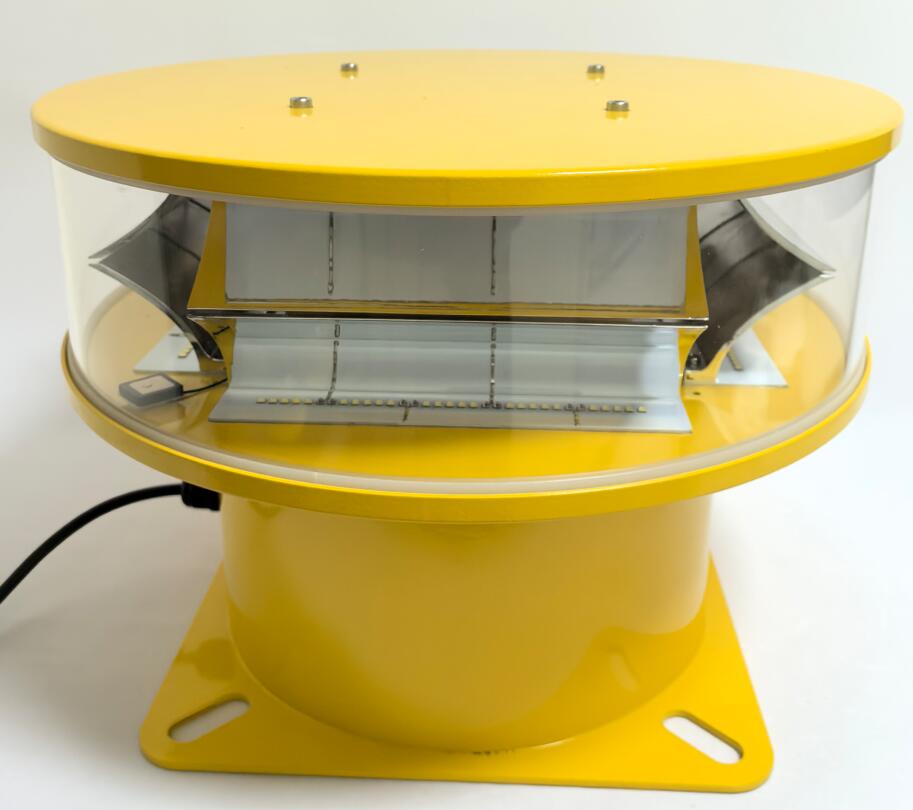The rapid expansion of urban infrastructure and the increasing number of tall structures have made aviation safety a critical concern. Among the various safety measures, the high intensity obstruction light plays a pivotal role in preventing collisions between aircraft and man-made obstacles. These lights are designed to be highly visible, even in adverse weather conditions, ensuring that pilots can identify potential hazards from a distance.
This article explores the importance, functionality, and applications of high intensity obstruction lights, highlighting their role in modern aviation and infrastructure safety.
What Is a High Intensity Obstruction Light?
A high intensity obstruction light is a powerful lighting device installed on tall structures such as telecommunication towers, wind turbines, skyscrapers, and bridges. These lights emit bright, flashing or steady beams to alert pilots of obstacles, especially during nighttime or low-visibility conditions.
Unlike standard aviation lights, high intensity obstruction lights are significantly brighter, with a luminous intensity exceeding 2,000 candelas. They are typically red or white, depending on their application and regulatory requirements.

Key Features of High Intensity Obstruction Lights
High Visibility – Designed to be seen from long distances, ensuring early warning for pilots.
Weather Resistance – Built to withstand harsh environmental conditions, including heavy rain, snow, and extreme temperatures.
Energy Efficiency – Many modern models use LED technology, reducing power consumption while maintaining brightness.
Regulatory Compliance – Must meet international aviation standards such as FAA (Federal Aviation Administration) and ICAO (International Civil Aviation Organization) guidelines.
Automatic Operation – Equipped with light sensors to activate at dusk and deactivate at dawn, optimizing energy usage.
high intensity obstruction light
|
Applications of High Intensity Obstruction Lights
1. Aviation Safety
The primary use of high intensity obstruction lights is to mark tall structures that could pose a risk to low-flying aircraft. Airports, helipads, and communication towers rely on these lights to prevent accidents.
2. Wind Energy Farms
Wind turbines, often located in open areas, can reach heights that interfere with flight paths. High intensity obstruction lights are installed on turbine blades and nacelles to ensure visibility.
3. Urban Skyscrapers
As cities grow vertically, skyscrapers must incorporate high intensity obstruction lights to comply with aviation safety regulations. These lights help pilots navigate densely built-up areas.
4. Bridges and Offshore Structures
Long-span bridges and offshore oil rigs use high intensity obstruction lights to alert both aircraft and maritime traffic, enhancing safety in multi-transport zones.
Regulatory Standards for High Intensity Obstruction Lights
Different countries have specific requirements for obstruction lighting. Some key standards include:
FAA AC 70/7460-1L – Specifies lighting requirements for structures in the U.S.
ICAO Annex 14 – Provides international guidelines for aerodrome and obstacle lighting.
EN 61820 (Europe) – Defines performance and testing criteria for aviation lighting.
Compliance with these standards ensures that high intensity obstruction lights provide reliable performance under all conditions.
Technological Advancements in High Intensity Obstruction Lights
Recent innovations have improved the efficiency and reliability of these lights:
LED Adoption – LEDs offer longer lifespans and lower maintenance compared to traditional incandescent bulbs.
Smart Monitoring Systems – Some models include remote diagnostics to detect faults and optimize performance.
Solar-Powered Options – Ideal for remote locations, solar-powered high intensity obstruction lights reduce dependency on grid electricity.
The high intensity obstruction light is an indispensable component of modern aviation and infrastructure safety. By providing clear visual warnings to pilots, these lights help prevent accidents and ensure smooth air traffic operations. As technology advances, we can expect even more efficient and intelligent lighting solutions to further enhance safety in the skies.
Whether on towering skyscrapers, wind farms, or communication masts, the high intensity obstruction light remains a silent guardian of aviation safety, working tirelessly to protect lives and property.

